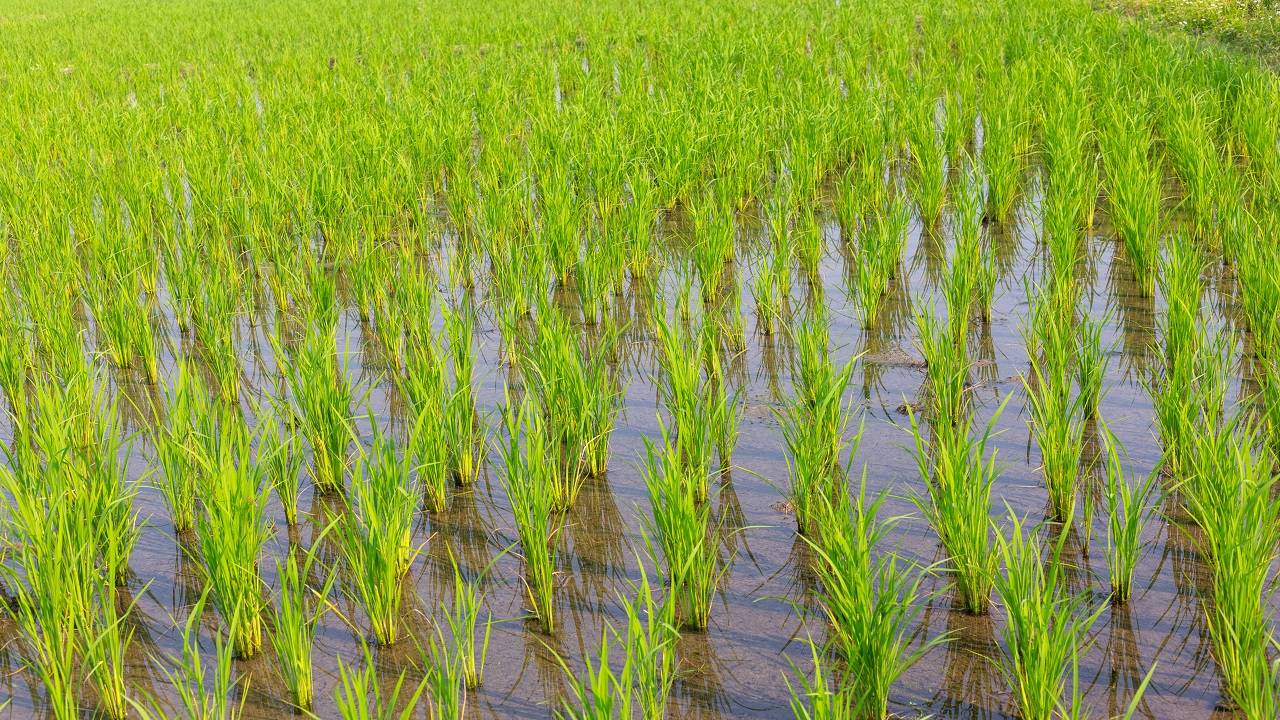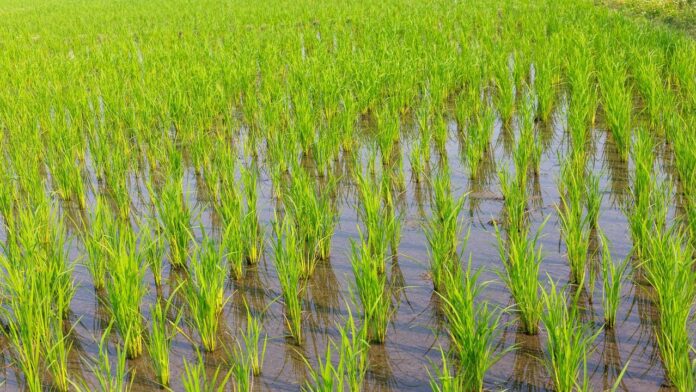
Rice cultivation offers two basic planting methods: direct seeding, where seeds are sown directly in the field, and transplanting, where seeds are nurtured in seedbeds before being transplanted into the field. Factors such as location, soil type, rice ecosystem, and availability of resources and labor should be taken into account in selecting the appropriate planting method.
Planting time is an important factor for successful crop establishment in the field. Best results are obtained by timely planting in well-developed seed. This approach promotes uniform and fast-growing crop growth, resulting in higher yields and improved resistance to weeds and pests. The ideal planting time varies based on factors such as location, rice varieties, weather conditions, water availability, and desired harvest time. Interplanting with neighboring fields, preferably within a two-week period, can reduce pest, disease, bird and rodent pressure on individual fields.
Varieties of rice
Rice comes in a variety of varieties, each with its own unique properties, flavors and culinary uses. Here are some common varieties of rice from around the world:
-
Long grain rice:
-
Basmati Rice: Fragrant long-grain rice, known for its aroma and delicate flavor, is commonly used in Indian and Middle Eastern cuisine.
-
Jasmine Rice: Another aromatic long-grain rice, particularly popular in Southeast Asian cuisine, such as Thai food.
-
American Long Grain Rice: Commonly used in the United States as a pilaf-like dish and side dish.
2. Medium grain rice:
-
Calrose Rice: A medium-grain rice commonly used in sushi and other Asian dishes.
-
Bomba Rice: Used to make traditional Spanish paella because of its ability to absorb liquids and flavors.
3. Small grain rice:
4. Types of Brown Rice:
-
Brown Basmati: A whole grain variety of basmati rice with a nutty flavor.
-
Brown Jasmine: A whole grain version of jasmine rice.
-
Wahani Rice: A nutty and aromatic brown rice variety.
5. Special Rice:
-
Black Rice (forbidden rice): A dark colored rice with a nutty flavor and high nutritional value.
-
Red Rice: Reddish brown rice with a nutty flavor, often used in Mediterranean and Asian dishes.
-
Bhutanese Red Rice: A red rice from Bhutan, known for its nutty taste and health benefits.
-
Carnaroli Rice: Another Italian short grain rice used to make creamy risotto.
Best ways to plant rice seeds
Rice seeding requires careful preparation and attention to detail to ensure a successful harvest. Here are seven steps to guide you through the process:
-
Choice of Rice Varieties:
Choose a rice variety that suits your climate and growing conditions. Factors to consider include temperature, water availability, and soil type. Consult local agronomists or extension services for recommendations.
-
Seed preparation:
Rice seedlings are usually started in the seed bed before being transplanted into the main field. Produce seeds by plowing, cultivating and leveling the land. The seed bed should have good water control to ensure constant moisture.
-
Seed treatment:
Before sowing, treat rice seeds to prevent diseases and increase germination rate. This may include soaking the seeds in water, applying fungicides, or using other seed treatments recommended for your area.
-
sowing seed:
Spread the rice seeds evenly over the prepared seed. You can do this by hand or using a mechanical seeder. Target the recommended seeding rate based on your rice variety and local guidelines.
-
Water Management:
Maintain an adequate water level in the seed bed. Initially, the seed bed should be filled with shallow water (about 2-5 cm deep) to encourage germination. Gradually reduce the water level as the plants grow, moving into the “dry nursery” stage with moist but flooded soil.
-
Weed Control:
Keep the seed bed free of weeds that can compete with the rice seeds for nutrients and sunlight. Depending on the cultivation method you choose, hand weeding or the use of herbicides may be necessary.
-
patching, implanting:
When the rice plants are 3-4 weeks old and have developed a few leaves, they are ready to be transplanted into the main rice field. Transplantation should be done carefully to avoid damaging delicate plants. Space plants according to the recommended planting density for your species.
How to take care of rice grains?
Here are some steps you can take to ensure the health of your growing rice:
1. Maintain a constant moist soil environment. Check regularly and water to submerge the soil. Initially, aim to maintain a water level of about two inches above the ground during the early growth stages, and raise the water level to about four inches when the rice stalks reach a height of more than six inches. give This is very important to prevent the soil from drying out.
2. Ensure adequate heat for your rice seeds. If the nights get cool, consider moving your plants indoors or covering them to retain heat.
3. Watch for any weeds that may sprout. Since rice cultivation spans several months, weeds may emerge during this period. Be diligent in removing these weeds to maintain a clear space for your rice to thrive.
Effective tips for harvesting rice
Rice harvesting is an important step in rice cultivation that requires precision and care to ensure successful and abundant production. Here are five tips for harvesting rice:
-
Timing is key:
Harvesting rice at the right time is crucial for optimum yield and grain quality. Rice is usually ready to harvest when the grains are golden or amber in color and the moisture content is around 20-25%. This usually occurs 30-45 days after flowering, but may vary depending on the rice variety and local conditions. Monitor your crop closely to determine the best time to harvest.
I
-
Use the right tools:
Traditional rice harvesting tools include sickles or scythes, but mechanized rice harvesters are now used for large-scale operations. Make sure your tools are sharp and well maintained to prevent damage to rice plants and grains during harvesting.
-
Cut the stalks correctly:
When using a sickle or mechanical harvester, cut the rice stalks carefully so as not to damage the grain. Cut cleanly close to the ground, leaving some stubble behind. This paratha helps in soil conservation and prevents soil erosion.
-
Collect and bundle:
After cutting the rice stalks, collect them in bundles or sheaves. These bundles are usually tied with twine or rice straw for ease of handling and transportation. Make sure the bundles are uniform in size and well tied to prevent damage to the grain.
-
Drying and Threshing:
After the rice is harvested and bundled, it needs to be dried to further reduce the moisture content. Place the bundles in the sun to dry for several days, turning them regularly to ensure drying. Next, use a threshing machine or traditional methods to separate the kernels from the stalks and husks.
Note that the specific techniques and tools used to harvest rice may vary according to local traditions, rice varieties, and scale of cultivation. It is important to adapt these tips to your specific situation and seek guidance from experienced farmers or agronomists in your area for best results. Properly harvested rice will store well and provide you with a valuable food source or crop to sell.
First Published: 30 Sep 2023, 15:22 IST
